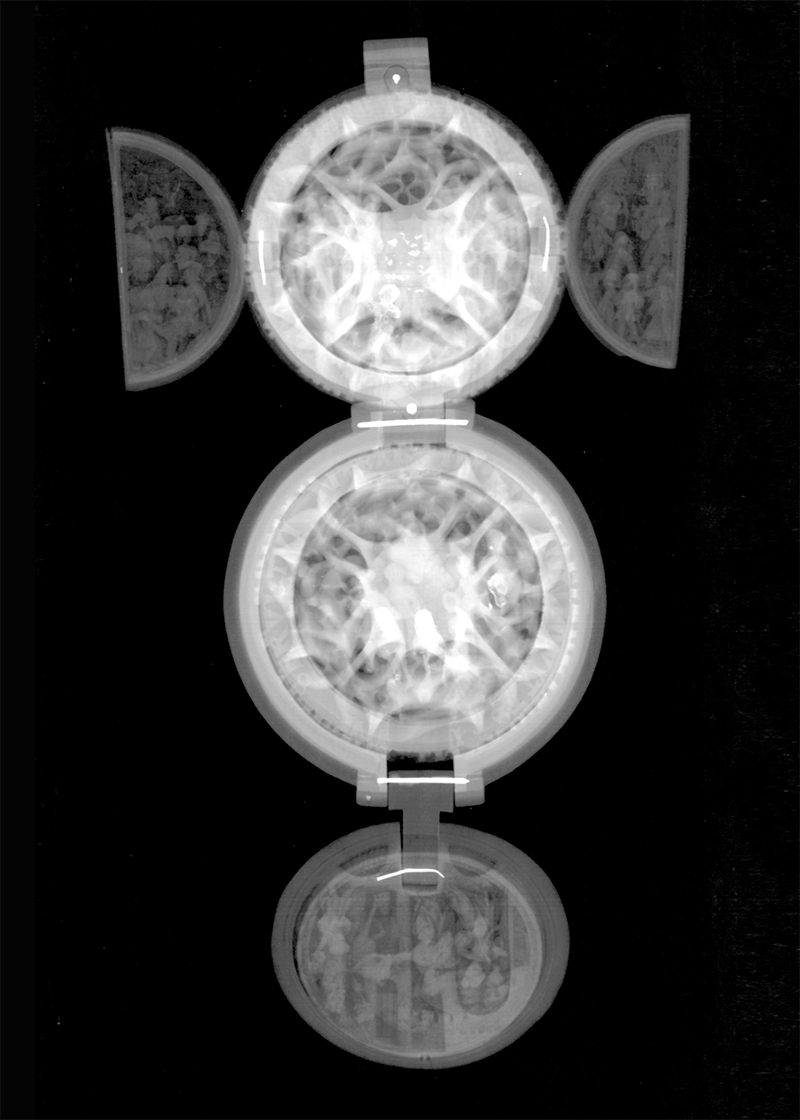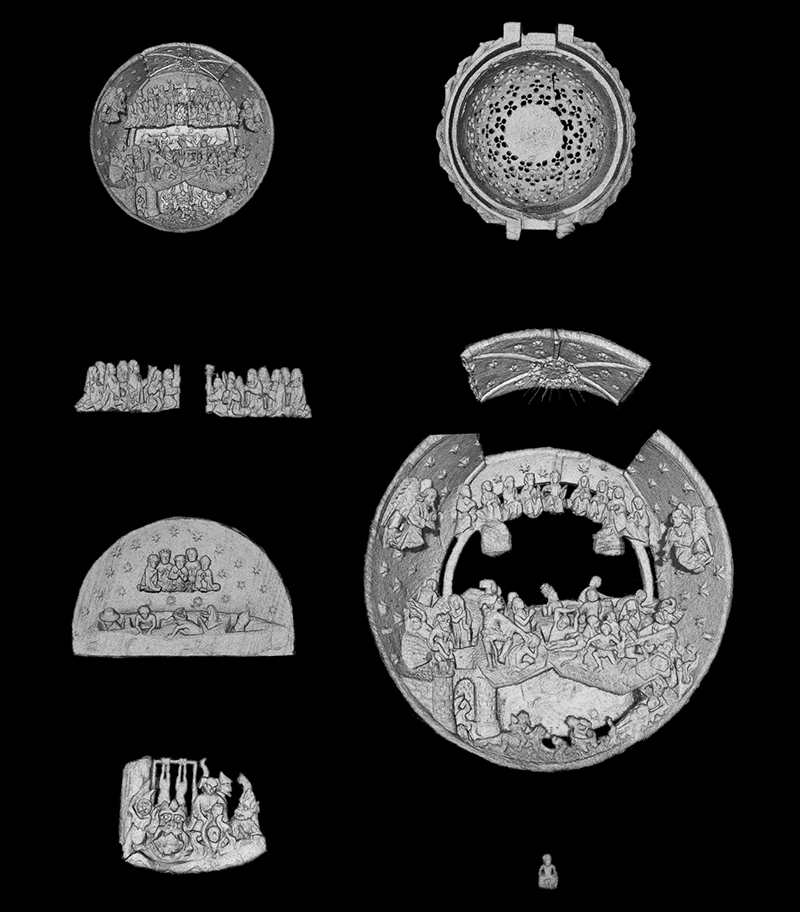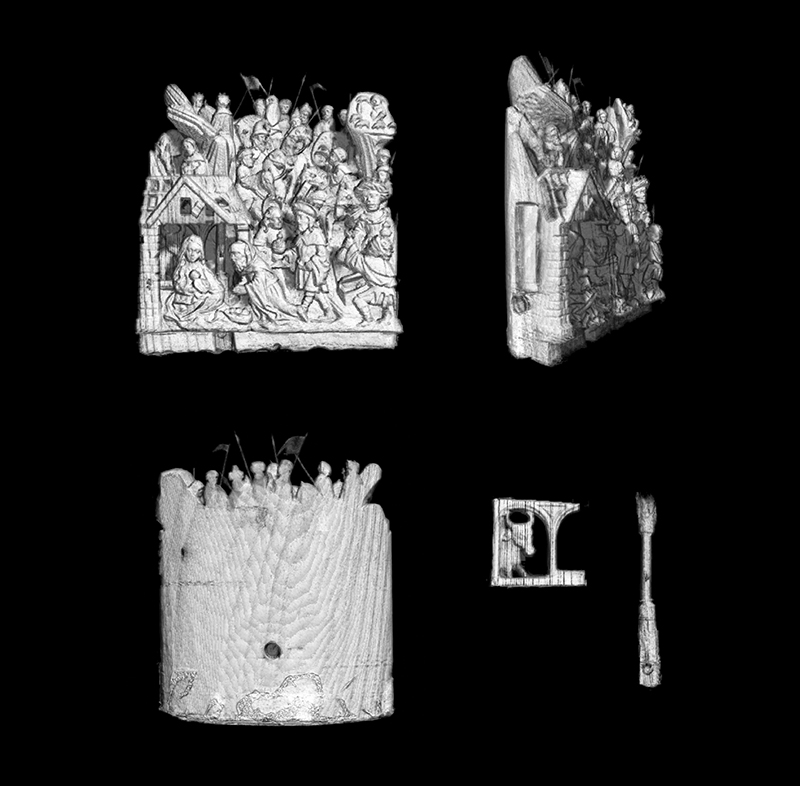Few things small enough to fit in the palm of the hand can inspire wonder about the limitless potential of human creativity. Gothic boxwood miniatures carved in the early 1500s do just that, prompting us to wonder how a person could have possibly made them by hand over five hundred years ago. We have answered that question using cutting-edge scientific imaging technology, and the 2016–2017 exhibition Small Wonders: Gothic Boxwood Miniatures allows you to discover the secrets of these tiny sculptures in person.

Scientific and art historical research, undertaken by the AGO’s Alexandra Suda, (Curator, European Art & R. Fraser Elliott Chair, Print & Drawing Council) and Lisa Ellis (Conservator of Sculpture and Decorative Arts) together with their colleagues at The Metropolitan Museum of Art in New York and the Rijksmuseum in Amsterdam, provides a new perspective on these works of art and their makers. This research is featured in the Small Wonders exhibition, on view at the AGO in fall 2016, The Met Cloisters in spring 2017, and at the Rijksmuseum in the summer of 2017.
The Curator
Sometimes I spend time in the galleries undercover, pretending to be a visitor so that I can see what interests them most. There are things I assume that the AGO’s guests come to see – Picasso, Rubens, Van Gogh, Rembrandt, Monet – and often I’m right, but I had no idea what a hit gothic boxwood miniatures were. No one walks by the case that holds those objects without stopping to take a look. After a few moments, almost every person asks the same question: “How were these made?” Remarkably, this question often sparks a conversation between strangers. As a curator, I want to be able to answer the questions posed by the AGO audience, but in this case I couldn’t! The technique used to make these works of art was just too complex and hidden for me to explain it without more information myself. To learn more, I turned to Lisa Ellis, our Conservator of Sculpture and Decorative Arts.

The Conservator
When Sasha came to me, I thought “this is going to be an easy question to answer.” I was wrong. To answer the question, I embarked with Sasha on what ended up being a five year journey into the worlds of physics, archaeology, 3D imaging software, and gaming computers. Simple x-radiography let me down; we needed a more sophisticated method to understand how these things were made. I turned to Micro CT scanning to create virtual 3D models of these works of art inside and out. Using the 3D models, I was able to take apart each object virtually so that I could see how its pieces fit together and therefore how it was made. Astonishing secrets were revealed, including in one case a hidden portrait of a king and a queen that no one had seen for over 500 years.

Unlocking the Mystery
Together, we learned that it takes a strong team of experts from different disciplines and institutions to delve deep into any single body of work. We also learned that sometimes the most obvious solution is the most effective – for example, standardized photography provided an incredible amount of new information about the works of art. We also learned that these works of art are universally captivating regardless of people’s background. The fact that they were made by hand 500 years ago is inspiring and makes us wonder about our own capabilities as creative humans.

Now that we know how the gothic boxwood miniatures were made, we have even more questions about the people who made them. What motivated the artists to go to this extreme? Will we ever know who they are? Were their original owners aware of the incredible skill that the creation of these works of art demanded? We continue to be impressed by them and know that our audiences will be too. There was a time when we worried that unlocking the secrets of these objects would make them less magical, but if anything it makes them even more wonderful today.